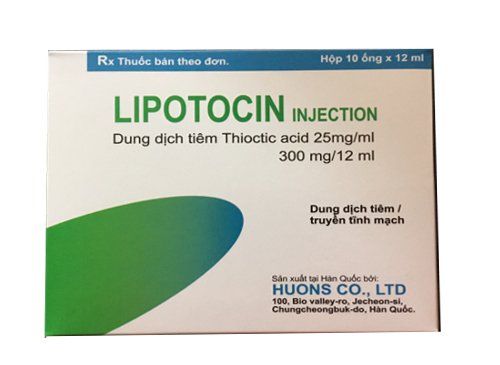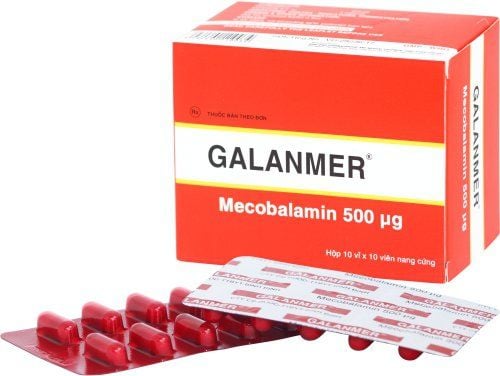This is an automatically translated article.
When peripheral neuropathy does not affect one nerve, but affects many nerves, it is called polyneuropathy. Most people with peripheral neuropathy have polyneuritis.1. What is polyneuritis?
Polyneuropathy accounts for the largest proportion of peripheral neuropathy cases. This condition occurs when many peripheral nerves throughout the body malfunction at the same time. Polyneuritis can form from a variety of causes, including:Exposure to certain toxins, such as alcohol abuse; Poor nutrition, especially vitamin B deficiency; Complications of certain illnesses, such as cancer or kidney failure. The disease is divided into two main categories:
Acute polyneuritis Symptoms appear suddenly and are severe. Acute polyneuritis is common in people with autoimmune diseases or infections, resulting in nerve damage. In addition, Guillain-Barré syndrome can also be a cause of acute inflammation. Acute cases are usually treated successfully for a short time.
Chronic polyneuropathy Symptoms are long-lasting and almost impossible to completely treat. Chronic polyneuritis can be caused by diabetes, kidney failure, or many other reasons. It is not always easy to find the cause of the disease, and in some cases there is no obvious cause.
One of the most common forms of chronic polyneuropathy is diabetic nerve damage - a complication that occurs in people with diabetes. The disease is more serious if the person does not control blood sugar well. In rare cases, diabetes can also lead to mononeuropathy (affecting only one nerve).

Nguyên nhân gây viêm đa dây thần kinh mãn tính có thể là do bệnh tiểu đường
2. Symptoms of polyneuritis
Symptoms of polyneuritis can vary depending on the cause, but the most common are:Tingling or tingling sensations, numbness, "stinging" (known as paresthesia) - paresthesia); Loss of sensation in the arms and legs; Burning sensation in the feet or hands; Sudden onset of pain; extreme sensitivity to touch (called allodynia); Weakness in the limbs, which may be due to muscle weakness or atrophy; Unable to walk straight, easily tripping or falling; Difficulty swallowing.
3. Complications of polyneuritis
Because people with chronic polyneuritis often lose the ability to sense temperature and pain, they may burn themselves or cause an open wound to themselves without realizing it.If the affected nerves are located in the internal organs, the patient may experience diarrhea or constipation, as well as loss of bowel and bladder control. In addition, polyneuritis also leads to sexual dysfunction and abnormally low blood pressure.
One of the most serious complications of polyneuropathy is Guillain-Barre syndrome. This is a rare, sudden, progressive condition in which the body's immune system attacks nerves as soon as they leave the spinal cord. Symptoms tend to come on quickly and worsen, sometimes leading to paralysis. The patient will initially experience limb weakness and tingling, which then spreads throughout the arm. More severe cases can cause problems with blood pressure, heart rate and breathing problems. Although very serious, patients are more likely to recover if treated early.
Chronic polyneuritis is a chronic form of Guillian-Barre syndrome. The symptoms then continue for months and even years. About 30% of patients are at risk of being in a wheelchair, so early diagnosis and treatment are important.

Viêm đa rễ dây thần kinh cũng dẫn đến rối loạn chức năng tình dục
4. Diagnosis and treatment
4.1. Diagnosis Peripheral neuropathy has many potential causes. In addition to a physical exam and blood tests, a doctor diagnosing polyneuritis usually requires:Review the patient's medical history, including: Symptoms, lifestyle, risk of exposure to toxins, drinking habits and family history of nervous system diseases; Check nerve function; Imaging tests: CT or MRI Electromyography (EMG); Nerve or skin biopsy. 4.2. Treatment The goal of treatment for polyneuritis is to control the cause and relieve symptoms. If tests show that there is no underlying condition, the patient can wait and see if the polyneuritis improves.
Medications commonly used to relieve the signs and symptoms of polyneuritis include:
Pain relievers; Drugs containing opioids; Anti-epileptic drugs; Topical treatment with capsaicin cream; lidocaine patch; Tricyclic antidepressants; Serotonin and norepinephrine reuptake inhibitors duloxetine (Cymbalta)... There are also a number of other treatments that can help ease the signs and symptoms of peripheral neuropathy in general, such as: such as:
Transdermal nerve stimulation (TENS); Intravenous immunoglobulin; Separation of plasma ; Physical therapy; Surgery. In summary, polyneuritis is a disease that occurs when many nerves are affected at the same time. Depending on the cause, the disease will have different symptoms, such as movement and sensory disturbances that occur throughout the body. Polyneuritis can cause pain, or itching, and swelling in the feet, then the legs, fingers, hands, and arms. Complications can include muscle atrophy or weakness in the limbs, and mobility is affected.
Please dial HOTLINE for more information or register for an appointment HERE. Download MyVinmec app to make appointments faster and to manage your bookings easily.
Reference source: webmd.com; mayoclinic.org












